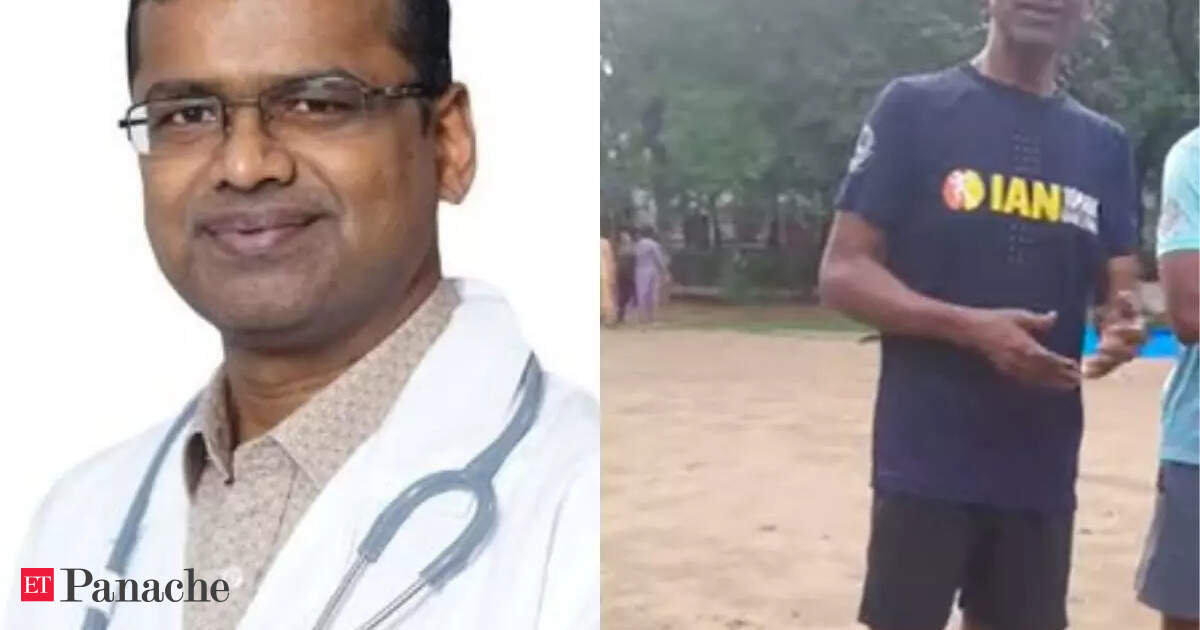For Dr. Sudhir Kumar, a senior neurologist at Apollo Hospital, Jubilee Hills, Hyderabad, fitness wasn’t a priority—until it became one. In 2020, at the age of 49, he found himself weighing 100 kg, battling ankylosing spondylitis, and trapped in an exhausting work routine that left little room for personal health. The COVID-19 lockdown changed that. With hospital work slowing down, he saw an opportunity to take control of his health.
“I used to run just once a year during marathons without any training,” he recalled in a YouTube video shared on his X handle too. But when life paused, he chose to move.
His fitness journey began with a simple walk. When he attempted to run 400 meters for the first time, he was breathless. But instead of stopping, he kept walking that day and every day after. “Just a pair of shoes, a morning schedule, and stepping out was enough,” he said. By gradually building up, he went from walking 5–10 km daily to consistent running. Over time, he has logged over 14,000 kilometers, including 822 10k runs and 133 half marathons.
Sustainable Weight Loss and Health Transformation
Within a year of beginning this regimen, Dr. Kumar lost 30 kg, dropping to 69 kg at his lowest. However, he noticed muscle loss as well, which led him to incorporate strength training and regain about 4.5 kg of muscle mass. He emphasized that this transformation was not just about weight but about holistic health—physical activity, improved eating habits, and adequate sleep.
He adopted time-restricted eating, gave up processed foods, and eliminated sugar and soft drinks. Sleep, which he once neglected due to long working hours, became a priority with 7–8 hours a night. He added that even the most disciplined running routine couldn’t make up for an unhealthy diet.
One of the most remarkable aspects of Dr. Kumar’s story is his age. Starting at 49 and now at 54, he challenges the widespread assumption that it’s “too late” to pursue fitness goals after a certain age. He shared that the real goal isn’t to be the fastest or win races—it’s simply to remain healthy.Each person’s journey is unique, he said, and it’s vital not to compare. “Run your own run, at your own pace,” he advised, especially during marathon events. He cautioned against chasing personal bests at the cost of physical strain or ignoring body signals.Addressing Common Fears About Running
Dr. Kumar also addressed frequent concerns—especially about knee damage and heart risks from running. Drawing from both personal experience and expert conversations, he stated that evidence suggests runners have a lower risk of knee arthritis compared to non-runners. And while sudden cardiac events are often highlighted in media, he said they are rare and mostly linked to underlying conditions.
He encourages regular medical evaluations before participating in endurance events, especially for those above 35 or with risk factors like diabetes or high cholesterol.
From Pain to Purpose
Having lived with ankylosing spondylitis for decades, Dr. Kumar knew pain well. But he observed that physical activity actually helped manage it. Hospital rounds across five floors would ease his stiffness by the time he reached the top. Even after a six-month break due to a flare-up, he didn’t give up—he resumed with strength training and walking until he could run again.
His central message is simple: focus on enjoyment, not competition. “Running is not a punishment; it’s a reward,” he explained. And any time spent improving one’s health, whether through walking, yoga, or meditation, is never wasted.
Dr. Sudhir Kumar’s story is proof that transformation doesn’t need to begin in youth or with perfect health. Sometimes, it begins with a 400-meter jog—and a commitment to keep moving forward.
